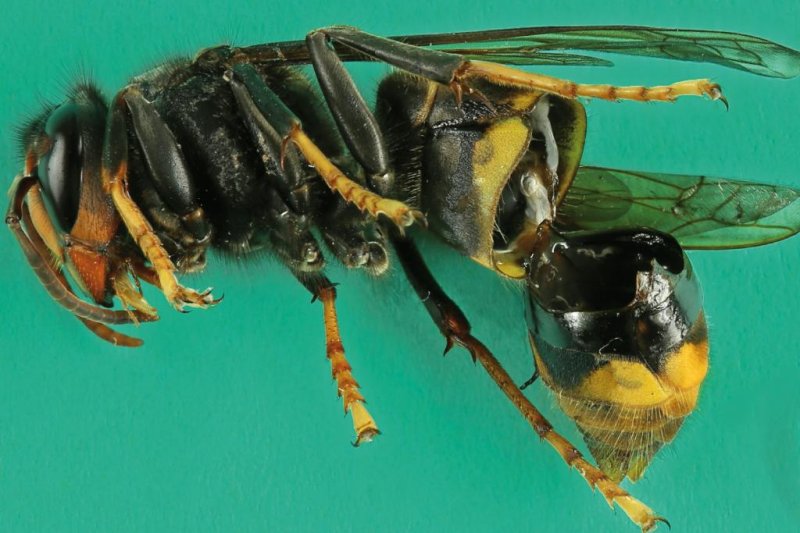New research suggests the yellow-legged Asian hornet could cost European farmers millions each year in damages and mitigation costs if it continues to spread across Europe. Photo by Quentin Rome/
Wikimedia Commons
April 6 (UPI) -- Since its accidental introduction to France in 2003, the yellow-legged Asian hornet has quickly spread across Europe. The invasive species damages crops and disrupts pollination services, but until now, researchers haven't tallied the cost of hornet's invasion.
In a new study, published this week in the journal NeoBiota, scientists estimated the cost of damages caused by the invasive hornet, as well as the price of necessary eradication efforts.
The research suggests eradication efforts in France cost 23 million Euros (about $24 million) between 2006 and 2015.
If the species continues to spread, filling out its climatically suitable distribution, French farmers could end up spending 11.9 million Euros each year to battle the invasive pest. Millions in mitigation spending will also be necessary in Italy and Britain.
"In 2006, only two years after the hornet was first observed in France, three departments were already invaded and the cost of nest destruction was estimated at 408,000 Euros," study co-author Franck Courchamp, professor at Paris-Saclay University in France, said in a news release. "Since then, the estimated yearly costs have been increasing by approximately 450,000 Euros each year, as the hornet keeps spreading and invades new departments. Overall, we estimated 23 million Euros as the cost of nest destruction between 2006 and 2015."
Data analyzed by the study's authors showed the yellow-legged Asian hornet is spreading through Europe faster and faster every year. Because the species, V. velutina nigrithorax, preys on honeybees, it can severely disrupt apiculture and crop pollination services. The hornet also preys on other native insects, so its presence could negatively affect the health of a variety of European ecosystems.
Mitigation efforts mostly involved nest destruction, but researchers suggest more should be done to prevent the continued invasion of the yellow-legged Asian hornet.
"As of today, the effort put into nest removal is not sufficient to prevent the spread of the species," researchers wrote in their paper.
More aggressive nest destruction and prevention efforts will cost money, but the latest research suggests the potential damage caused by the hornet will dwarf mitigation costs. If policymakers and farmers don't take aggressive action, the hornet's spread could lead to a 5 percent decrease in pollination services across much of Europe -- an annual economic loss of 50 million Euros.















